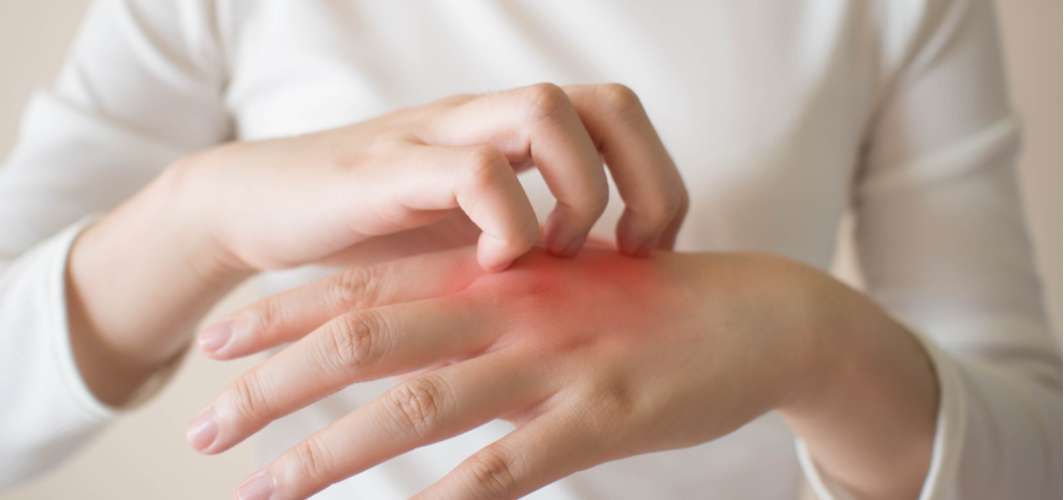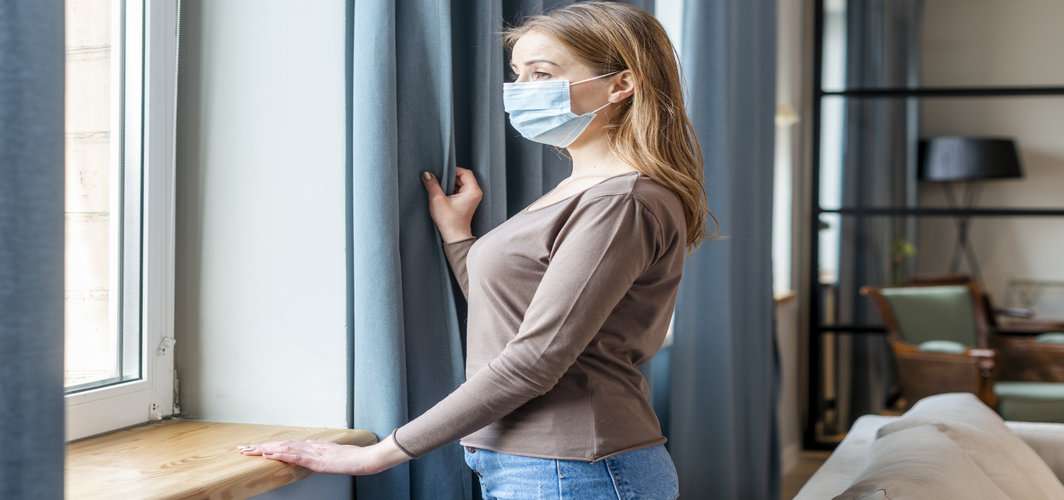Coronavirus Updates
Mucormycosis: Black Fungal Infection in COVID-recovered Patients
5 min read
By Apollo 24/7, Published on - 12 May 2021, Updated on - 30 October 2022
Share this article
15
295 likes

The symptoms of COVID-19 infection can range from mild to life-threatening complications along with bacterial and fungal coinfections. People with comorbidities such as diabetes mellitus, chronic obstructive pulmonary disease (COPD), and those who required corticosteroid therapy, mechanical ventilation, and intensive care are at increased risk of developing severe opportunistic infections.
Opportunistic infections (OIs) are diseases that are severe and occur more frequently, especially in people with compromised immune systems. Some of the OIs reported in COVID-19 patients are oropharyngeal candidiasis (yeast infection inside the mouth), pneumonia, pulmonary aspergillosis, and bloodstream candida infections. Besides all these infections reported in COVID-infected patients, doctors have also reported several cases of a serious fungal infection called mucormycosis.
What is mucormycosis?
Mucormycosis (also known as zygomycosis) is a serious fungal infection caused by a group of moulds called mucormycetes. Mucormycosis usually affects people who are either suffering from a health condition or consume medications that suppress the body's immune system. It mostly affects the sinuses or lungs after the inhalation of fungal spores from the air. It can also enter the body through the skin after a cut or any other skin injury.
What are the symptoms of mucormycosis in COVID-19 patients?
The symptoms of mucormycosis depend on the area the virus affects. However, according to the Indian Council of Medical Research’s (ICMR) advisory on 9th May 2021, the symptoms of mucormycosis in COVID-19 patients include:
- Congestion or blockage in the nose
- Blood filled or blackish nasal discharge
- Pain on the cheekbone and jaw
- Pain, numbness and swelling on one side of the face
- Black-coloured discolouration over the bridge of the nose or palate (roof of the mouth)
- Pain or loosening of the teeth
- Blurred or double vision
- Pain and redness around the eye
- Bluish discolouration of the skin near the sinuses or the eye socket due to lack of oxygen
- Fever
- Chest pain
- Increased difficulty in breathing
- Worsening of the cough
- Headache
- Blood filled vomits
- Damage of facial structures due to tissue death (necrosis) (rare)
If the infection develops in the brain, the affected person may also develop mental signs such as confusion, altered mental status, paralysis, and even coma.
Why is black fungal infection found in COVID-recovered patients?
Events that may result in the development of the black fungal infection include:
- Several studies have reported that during COVID-19 infection, the body can experience a cascade of events such as the hyperactivity of the immune system, dysfunction of cilia (finger-like structures that protect the lungs), the occurrence of cytokine storm, formation of clots in the blood vessels, and ultimately exhaustion of the immune system.
- These events promote secondary bacterial and fungal infections, especially in patients who suffered severe infection and were subjected to emergency invasive procedures such as mechanical ventilation, ECMO and prolonged hospital stays.
- Moreover, the use of corticosteroid treatment during the COVID-19 infection also provides a perfect environment for fungal spores.
- The hot and humid environment of the hospital also allows the fungal spores to grow.
- According to a study published in the journal JAPI in January 2021, hyperglycemia (high blood sugar) increases endothelial receptor GRP78, which increases the risk of developing a microbial infection such as mucormycosis.
- There is an increased amount of iron in the serum of people suffering from ketoacidosis (a complication of diabetes). This extra iron helps in enhancing the virulence of the mucorales (the fungus).
- The corticosteroids used during the treatment of COVID-19 infection suppresses the immune system and promotes the development of mucormycosis.
Who is at increased risk of developing mucormycosis?
Factors that may increase the risk of mucormycosis in COVID-infected patients include:
- Presence of co-morbidities in people who have undergone transplant surgery, presence of malignancy (cancer) or immunosuppressing disease (HIV/AIDS)
- Uncontrolled diabetes mellitus
- Suppressed immune system due to use of steroids
- Prolonged stay in the Intensive Care Unit (ICU).
Can mucormycosis be prevented in COVID-19 patients?
Some measures that can help reduce the risk of developing mucormycosis in COVID-infected people include:
- Maintain healthy blood sugar levels by taking the prescribed anti-diabetic medications and by monitoring the blood glucose level post-recovery/discharge.
- Take prescribed steroids, antibiotics and antifungals at the same designated time every day. Do not miss even a single dose of the medication.
- Clean any humidifiers that are used, every day.
- Wear shoes, full-sleeved trousers and shirts, masks and gloves while handling soil or manure.
- Maintain a high degree of personal hygiene.
- Clean any skin injury thoroughly with soap and water, especially if they have been exposed to soil or dust, to reduce the risk of infection.
Apart from these, it is critical to identify the signs and symptoms of mucormycosis early to reduce the risk of severe infection.
Can mucormycosis be treated?
Mucormycosis is a serious infection, which should be treated immediately or else it could be life-threatening. The treatment of mucormycosis in a COVID-patient involves:
- Discontinuing the use of steroids and immunomodulators by titrating the dose (gradually reducing the dose).
- Using antifungal drugs such as amphotericin B, posaconazole, or isavuconazole intravenously (through the vein) or orally for at least 4 to 6 weeks.
- Surgically debriding all the necrotic (dead) tissues to prevent further spread of the infection.
- Monitoring the patient clinically and with the help of radio-imaging to determine the response to the treatment and to detect the progression of the disease.
Conclusion
If it is not diagnosed early, the ‘black fungal’ infection, mucormycosis, can be extremely dangerous. COVID-infected patients who have poorly controlled diabetes mellitus or have suppressed immune system must inform their doctor if they develop any of the symptoms of mucormycosis. This will allow doctors to make necessary medical interventions if a mucormycosis infection is suspected in a patient suffering from severe COVID-19 infection. Prompt diagnosis and treatment can help prevent the progression of severe mucormycosis infection.
You can also explore our range of Coronavirus Care and Coronavirus Protection products.
Coronavirus Updates
Leave Comment
Recommended for you

Coronavirus Updates
All You Need to Know about COVID-19 Testing Kits in India
Many Coronavirus testing kits are being developed in India and globally to combat the growing number of COVID-19 cases. The data from these tests can offer significant insights needed to stop or slow the progression of the disease.

Coronavirus Updates
How do we Shop for Grocery Safely During COVID-19?
It is quite normal to be worried about getting infected by Coronavirus when stepping out to buy groceries. However, you can take some precautions mentioned in this article to ensure your safety.

Coronavirus Updates
What Should You Do If You are Exposed to a COVID-19 Patient?
If you’ve met someone recently who has later tested positive for COVID-19, it is natural to be worried about having contracted the virus yourself.
Subscribe
Sign up for our free Health Library Daily Newsletter
Get doctor-approved health tips, news, and more.
Visual Stories

Explained: The Highly Transmissible SARS-CoV-2 Variants
Tap to continue exploring
Recommended for you

Coronavirus Updates
All You Need to Know about COVID-19 Testing Kits in India
Many Coronavirus testing kits are being developed in India and globally to combat the growing number of COVID-19 cases. The data from these tests can offer significant insights needed to stop or slow the progression of the disease.

Coronavirus Updates
How do we Shop for Grocery Safely During COVID-19?
It is quite normal to be worried about getting infected by Coronavirus when stepping out to buy groceries. However, you can take some precautions mentioned in this article to ensure your safety.

Coronavirus Updates
What Should You Do If You are Exposed to a COVID-19 Patient?
If you’ve met someone recently who has later tested positive for COVID-19, it is natural to be worried about having contracted the virus yourself.